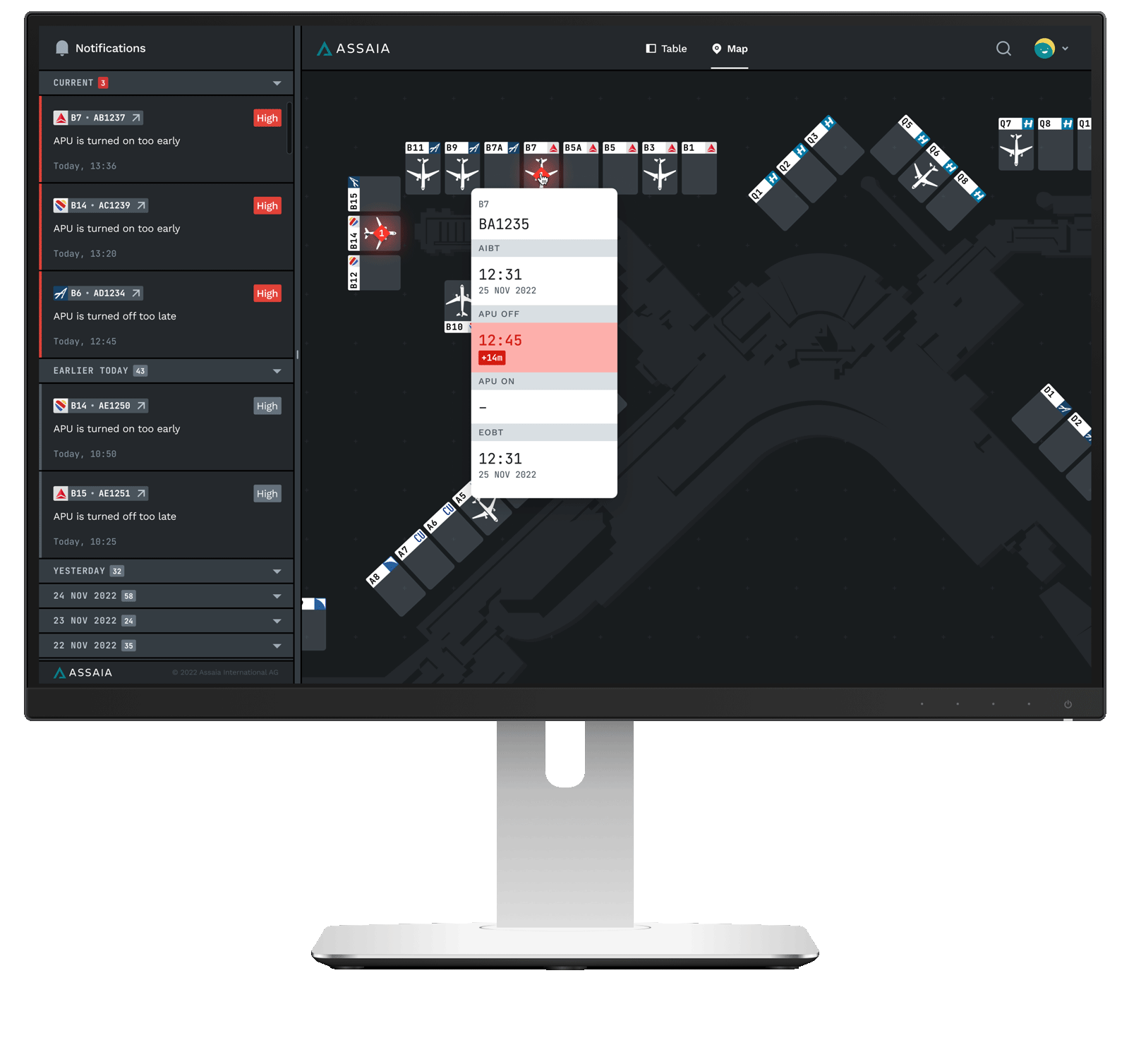


Aviation software company Assaia has unveiled a stand monitoring system, Auxiliary Power Unit (APU) Emissions Control, to cut APU usage at airports.
The technology reduces carbon emissions and cuts costs by detecting unwarranted APU usage at the gate, and delivering automated real-time alerts and reports.
“Many airports provide fixed or mobile ground power options, as well as pre-conditioned air,” said Max Diez, COE of Assaia. “There is often no need to use APUs at the stand. However, we know they continue to be used, needlessly pumping polluting emissions into the atmosphere and racking up fuel bills. One of our customers, for example, learned that a carrier was not shutting down their APUs at all while the aircraft were on the ground. This is very unavoidable.”
A recent report commissioned by the Airport Operators Association (AOA) showed that the largest part of an airport’s emissions come from aircraft on the ground, with APUs being a major contributor. However, there is currently no systematic real-time visibility of APU usage.
Through the use of sensors installed at the stand, APU Emissions Control can monitor whether the APU is in use or not. Data is fed into Assaia’s artificial intelligence software, which compares it against flight information to establish is the APU usage meets of violates regulations. This information is then displayed on a desktop app and automated text messages are sent to the appropriate people with immediate alerts about violations of APU usage regulations.
“Every metric shows that using FEGP, GPUs and PCAs is much better for the environment and reduces operating costs,” added Diez. “It’s obvious the current situation has to change. And the only way to make that happen is by providing clear visibility about what is actually happening at each stand After all, you can’t manage what you can’t measure.”
Assaia’s software, which has already monitored more than 1.5 million turnarounds at airports in North America and Europe, has been been show to reduce the need for APU usage by at least nine minutes per turnaround. This equates to a reduction in CO2 emissions of more than 13 million kg of CO2 per year for a large airport.





